This Ballistic Time Attack RX-7 FD3S Tears Up Touge And Track With Equal Ferocity
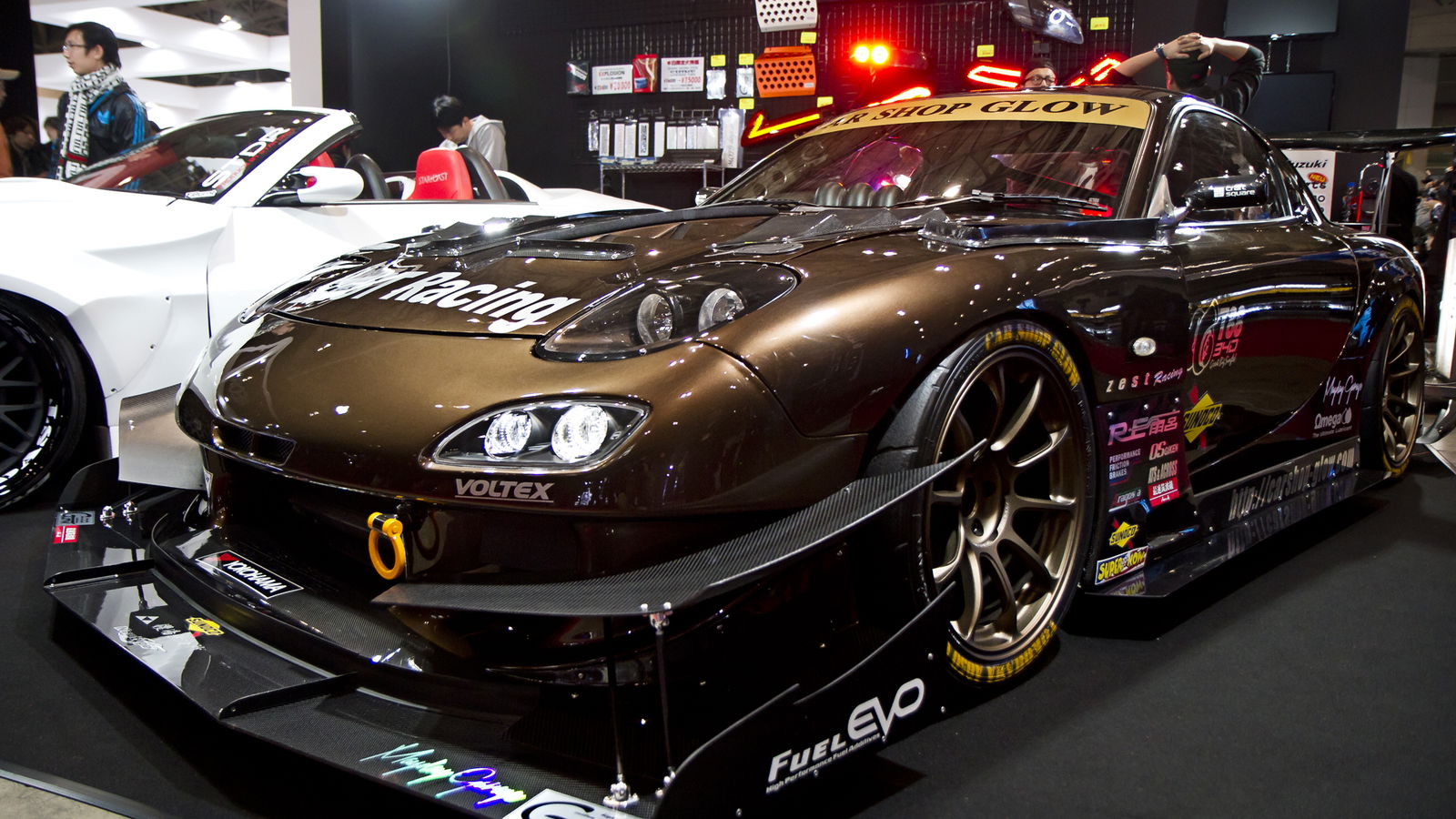
A super-modified Japanese sports car racing around on public roads and giving the metaphorical finger to The Man is a bona fide petrolhead cliché. Yet for all the videos, photos and articles that imply such machines are a regular sighting here in Japan, the reality is that like most other countries, Japan is actually filled with bland washing machines with all the chutzpah of a dead horse.
That’s not to say you’ve been misled though, you just need to know where to look for these cool, underground weapons. That, or get lucky by seeing them at the Tokyo Auto Salon.
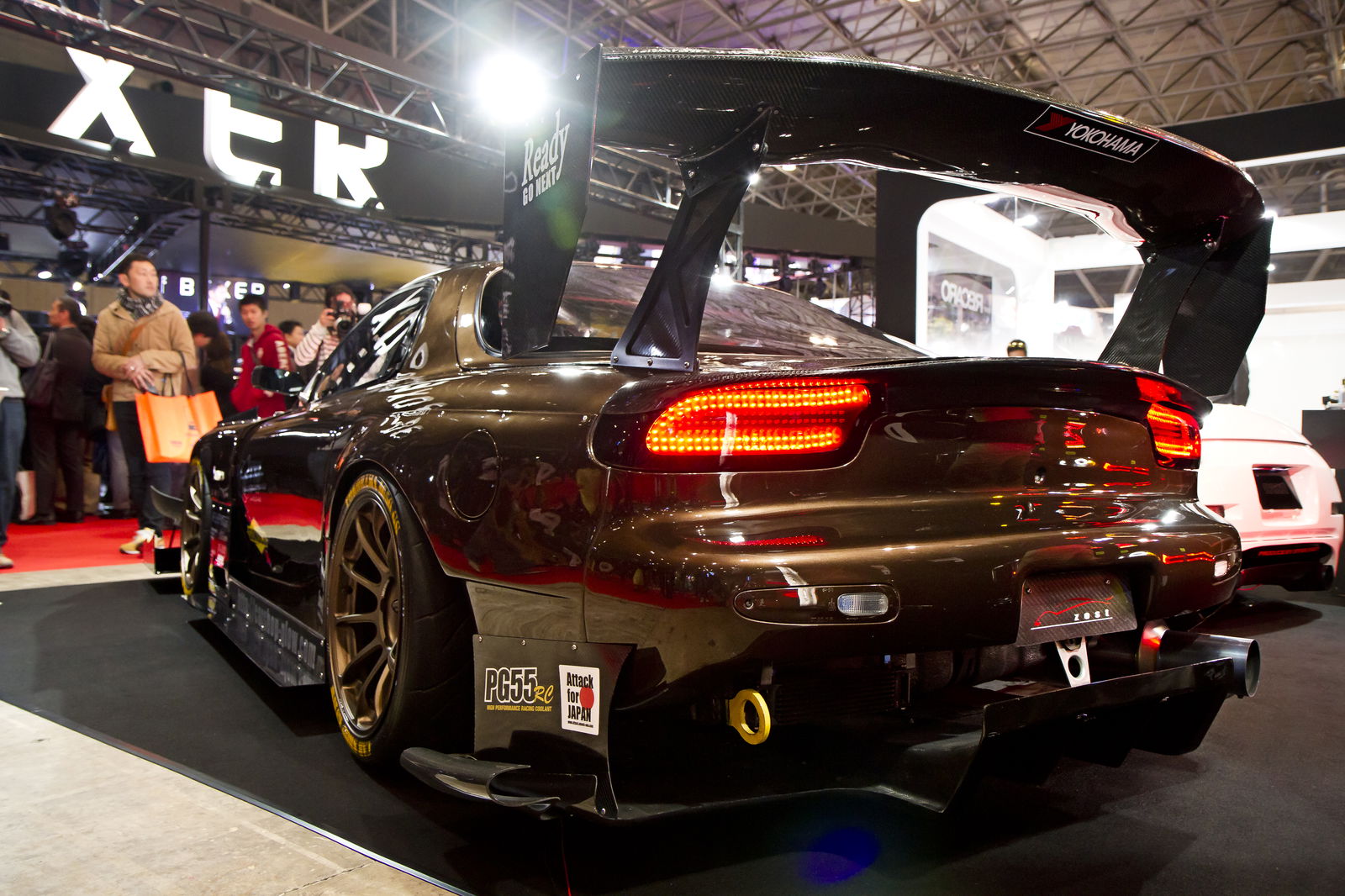
I did the latter when I stumbled across the Car Shop Glow FD3S. Avid followers of Japanese car culture will likely have seen this machine in coverage of Battle Evome events in the past, but while it is very obviously built as an out-and-out Time Attack special - complete with insane Voltex aero and custom widebody RE Amemiya GT-AD kit - not many will know that it also has ABS, air-con, navigation, audio and an ETC card holder for Japan’s notoriously expensive tollways. Yes, this car, capable of 56-second laps at Tsukuba Circuit, is street-registered and driven.
Let that sink in for a moment. This hardcore Time Attack racer, which in any other country would be impounded in an instant, is driven on public roads. You’ve got to love Japan.
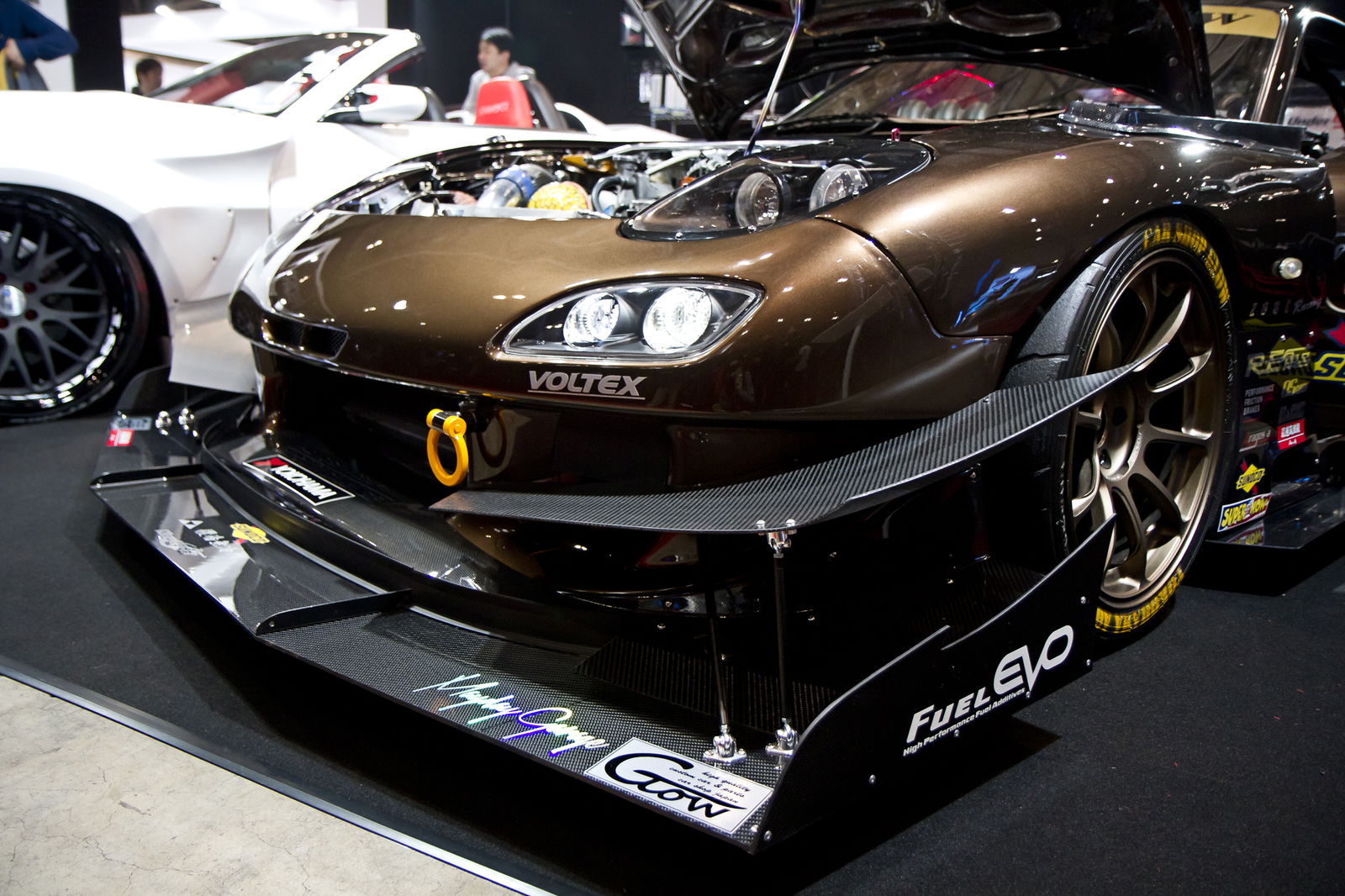
Looking closely at the specs should reinforce how insane this idea is. In its current incarnation, this RX-7 puts out 523bhp from its bridge-ported and balanced 13B rotary engine, aided by a huge T88-34D GReddy turbocharger.
That huge snail pushes air into the combustion chambers via a custom V-mount intercooler, while the fuel comes in through Sard 1000cc/min injectors, all controlled via an HKS F-Con V Pro engine management system. And the exhaust? That’s an original Zest Racing 90mm titanium straight pipe. I can only imagine how this thing sounds ripping it up on public roads.
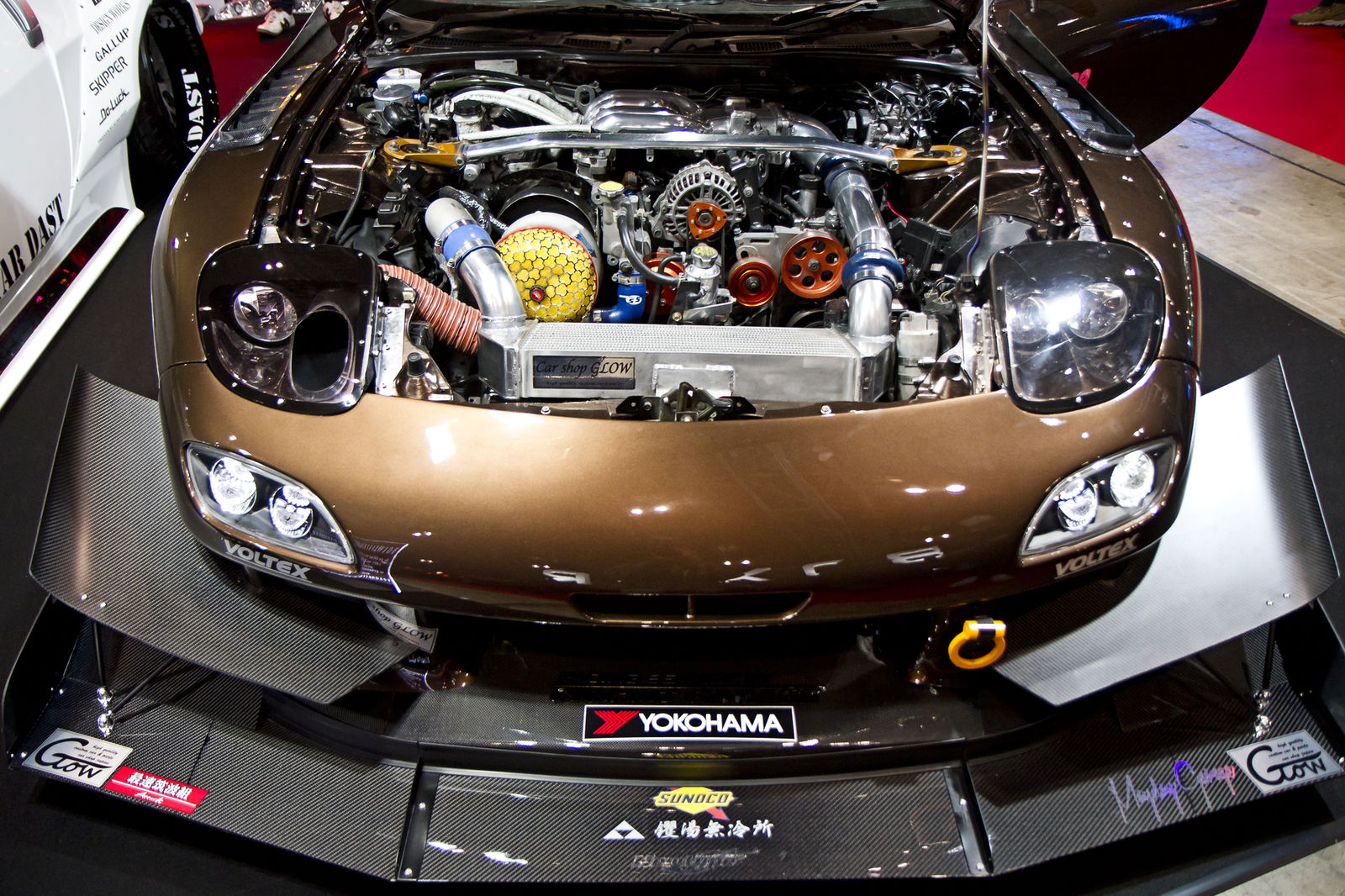
The car has been developed over several years, with the extreme front aero you see here only a recent addition, allowing the owner to carry higher speeds through the turns of Tsukuba Circuit; the 56-second lap was set without this mad setup, so it’s fair to assume it could go even quicker now.
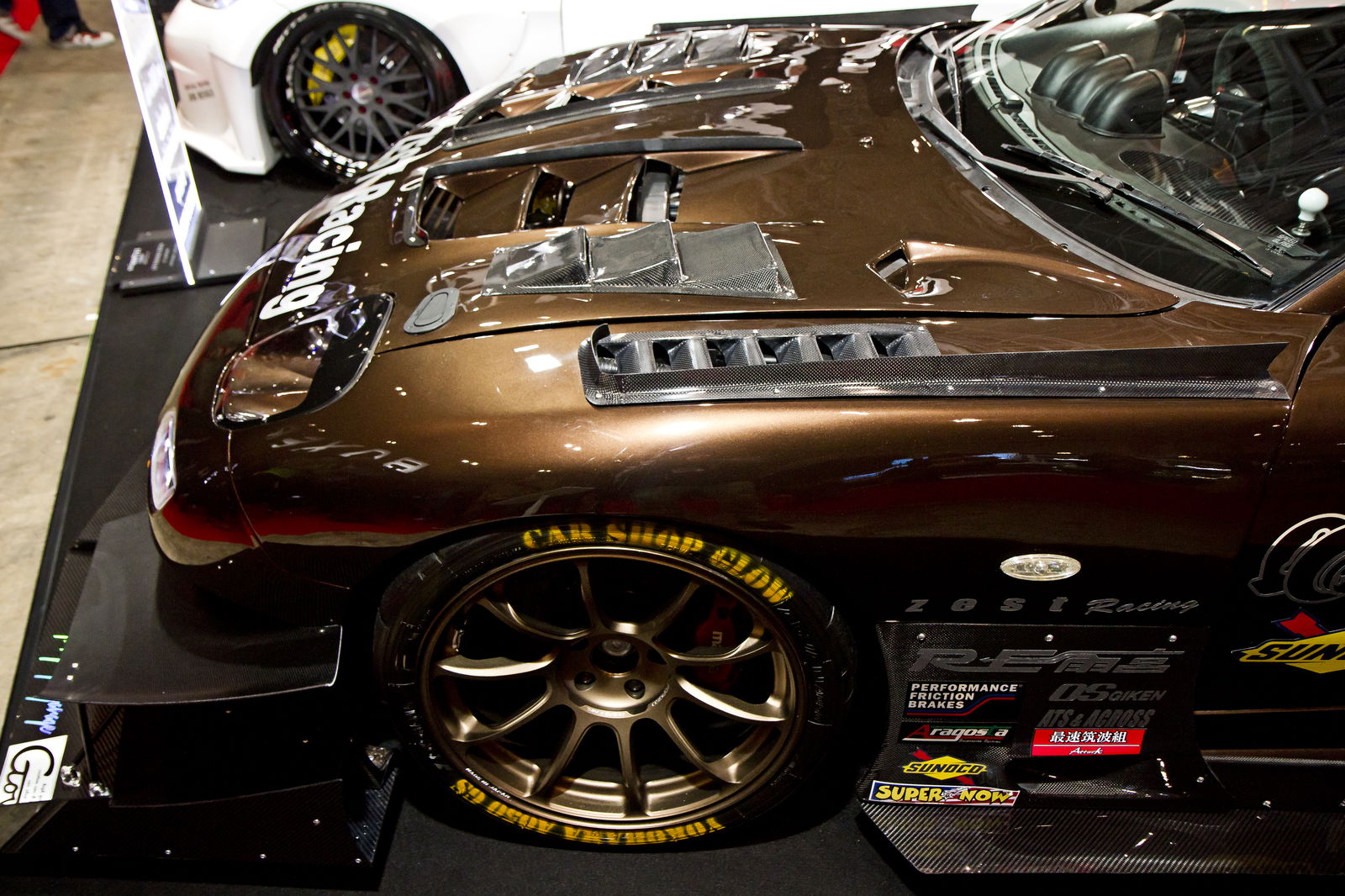
All that power is put down to the ground through an HKS H-pattern six-speed, ATS carbon twin-plate clutch and Zest-spec Mazdaspeed two-way LSD. Aragosta suspension with 16.1kg Hyperco springs all round soaks up the bumps, while 295/30 AO50s wrap around 18x10.5 (front) and 18x11 (rear) Volk Racing ZE40 wheels to provide the grip.
As is often the case on tuned RX-7s, callipers are stock, with only upgraded PFC rotors at the front and PFC pads all round doing the slowing. The already-lightweight FD3S base, especially one as stripped out as this, means not much more stopping power is needed.
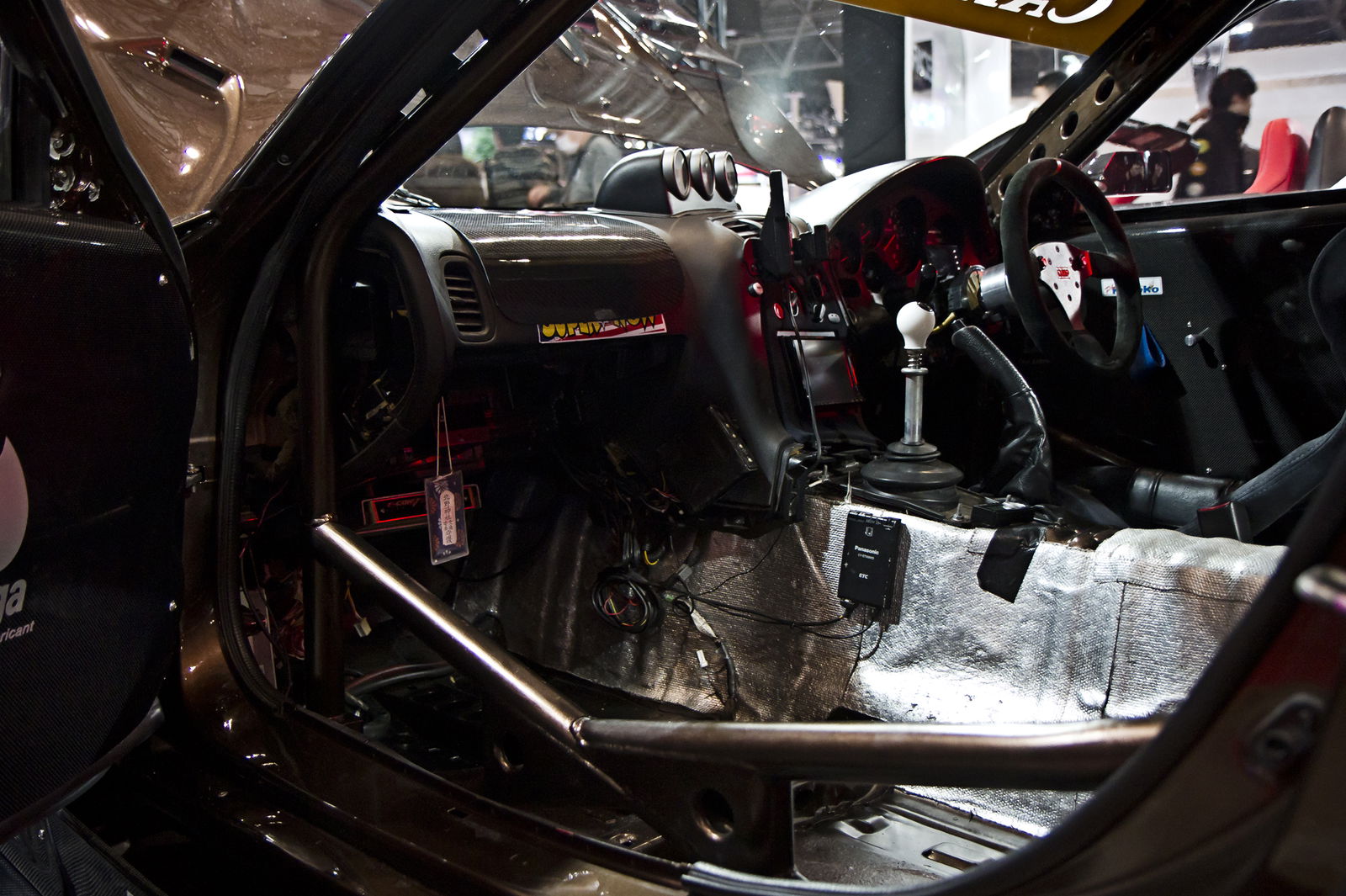
When it comes to driving on the street, it shouldn’t surprise anyone that a car built for circuit attacks is an absolute weapon on the touge. And for those who think the aero and circuit-spec ride height might be issues on such roads, owner Hara-san tells me he’s never had a problem. Japan’s tarmac is often race track smooth, aside from sections where the authorities have decided to spoil people’s fun with what are effectively lane-wide speed bumps leading up to certain corners.
So while Japan’s roads may not be filled entirely with the street cars of your dreams, there are still heavily modified touge missiles if you know where to look. Japan’s underground car culture is as vibrant as it ever was.
Comments